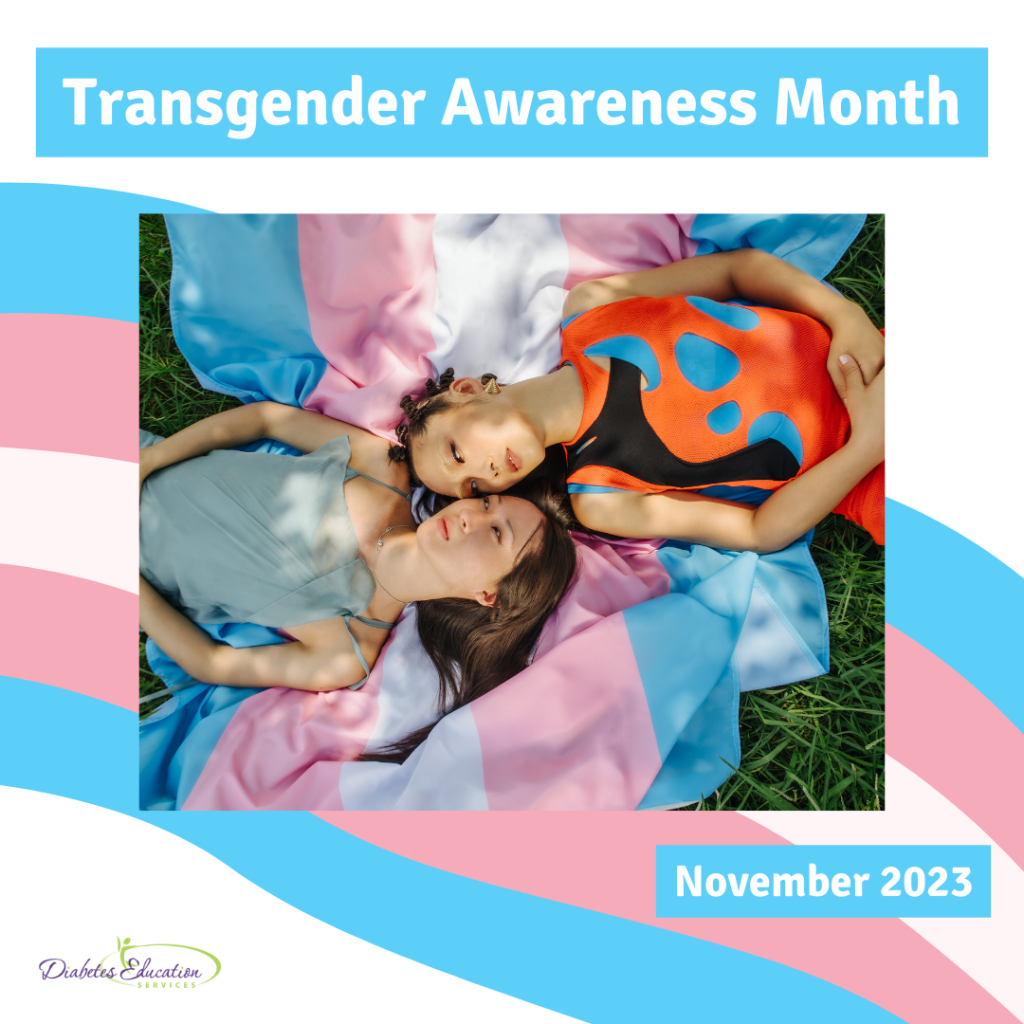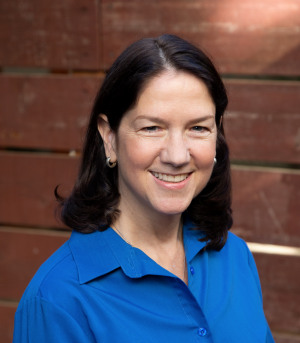
November is Transgender Awareness Month and in honor of our Trans and Gender Non-conforming community, we want to share some helpful resources for Diabetes Specialists to create more inclusive practices.
Whether we provide services in the hospital, clinic, or other outpatient settings, we can take steps to help the people we work with feel welcome.
“Members of the lesbian, gay, bisexual, transgender and queer (LGBTQ) community have unique health disparities and worse health outcomes than their heterosexual counterparts, which has clinical relevance in the delivery of diabetes care and education. Diabetes care and education specialists are in a pivotal position to help this medically-underserved and vulnerable population get the best possible care.”
Association of Diabetes Care & Education Specialists (ADCES)
Actions diabetes professionals can take to provide more inclusive care
Create healthcare settings that send a message of welcomeness to the Trans and greater LGBQIA+ community. There are many small and big ways to send a message of inclusion.
- Update intake forms to list more than just “Male” and “Female,” along with a spot for pronouns and/or a body map to list preferred terms of various body parts.
- Add bathroom door signs that welcome all genders.
- Placing pride symbols in clinic windows, waiting rooms, and exam rooms, especially during Pride month.
- Practicing cultural humility when providing care.
- Shift to using more inclusive language both in writing and when speaking with people living with diabetes. Inclusive language creates a bridge and the foundation of trust between healthcare providers and participants.
Practicing cultural humility
Cultural humility asks health care providers to develop critical self-awareness of personal implicit or explicit values and behaviors that may contribute to health care disparities. Cultural humility acknowledges the role of power and privilege within the patient-provider dynamic and within the health care system itself. Cultural values and behaviors emanating from the provider actually have the power to shape the encounter and may minimize the values of the person seeking care. By taking a closer look at our own biases during interactions, we can start becoming more intentional and align with the individual’s needs and values when providing care.
Shifting Our Language
As Diabetes Educators, we recognize the importance of language in providing person-centered care to best support people living with diabetes.
There are a few small changes we can make to provide inclusive care for all people. To make our practices more welcoming, we can establish All Gender Restrooms and update our materials to use gender-inclusive language. Here is a list of terms and tips for shifting this language and creating more inclusive practices.
Person-Centered Care includes Individualized Language
The easiest way to become more inclusive in our language which respects the autonomy of each individual to describe themselves and their bodies is to give them opportunities to share with us what those terms are and how they would like to be referred to.
A few ways you can do this are by expanding the ways we collect this information in our intake forms or discussing it with the individual in their initial appointment. You can incorporate sections to ask for someone’s pronouns or even a body map where someone can make notes about the preferred language that is used around their bodies. Giving space to outline triggering or preferred language for each person can empower not only gender-diverse people but can also support trauma survivors of all genders.
By paying careful attention to each person’s experience from the moment they walk in the door until we say goodbye, we can find ways to create a more inclusive environment. This awareness of the details is the great first step to showing your care and respect for those you work with.
List of Resources
ADCES Inclusive Care for LGBTQ+ People with Diabetes Handout – this handout provides definitions, terms to avoid, and a cultural competency checklist to help you move towards improving inclusivity within your practice.
All Gender Restroom Sign PDF
Inclusive Perinatal Care – Our blog on shifting language for more inclusive perinatal care.
Diabetes Prevention and Management for LGBTQ+ People Handout – this handout includes research of diabetes within the LGBTQ+ community, along with clinical considerations, programs, and resources for diabetes educators to use within their practice.
Policies on Lesbian, Gay, Bisexual, Transgender & Queer (LGBTQ+) issues – this resource by the American Medical Association lists all the current healthcare policies in place for the LGBTQ+ community.
Helio’s LGBTQ+ Health Updates Resource Center – this is a “collection of news articles and features that provide the latest information on the unique health needs of individuals in the LGBTQ+ community.
Online Therapy Guide for LGBTQ+ Youth – this resource uncovers common mental health problems and causes in LGBTQ+ youth and gives pointers on finding the right online therapist.
Are we missing important information and resources? Send us your favorites to [email protected].
Inclusive Diabetes Care for LGBTQ Community

For more information, read our Expert Interview with Theresa Garnero, APRN, BC-ADM, MSN, CDE President of Sweet People Club, and writer of the article “Providing Culturally Sensitive Care for the Lesbian, Gay, Bisexual, and Transgender (LGBT) Community” in Diabetes Spectrum.
National Diabetes Month
.png?h=459&iar=0&w=1459&hash=E665292742D2BABAECCFA59A56B88D3C)
November kicks off National Diabetes Month, a time to recognize that over 11% of Americans are living with diabetes and over 35% have prediabetes. Since diabetes results from a combination of genetics plus environment, there is a recognition that social determinants of health play a pivotal role in the development of diabetes and its complications. Through advocacy and education, we can inform individuals on best care for diabetes and support them in taking action to improve the health of their communities to prevent future diabetes. We have put together a list of FREE diabetes resources in English and Spanish to share with people living with prediabetes and diabetes. Thank you for your advocacy and belief that we can make a difference. Coach Beverly
All hours earned count toward your CDCES Accreditation Information









